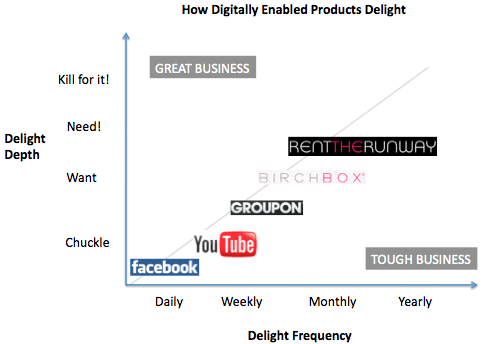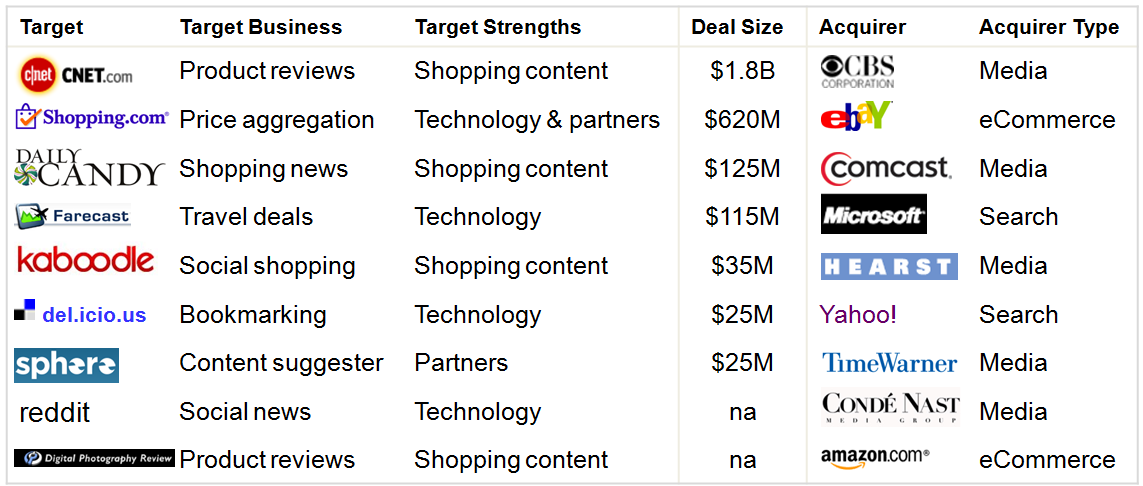A friend in the VC community asked me to evaluate a mobile wishlist and deal finder. Interestingly, that’s what SF darling Pinterest first raised money for with HelloTote.
I advised my friend to focus on how deeply and frequently consumers get delighted by the product.
- Low delight, high frequency products offer a user low levels of delight daily. Facebook, Instagram, YouTube and Zynga are great examples.
- High delight, low frequency products offer delight a handful of times each year. RentTheRunway and Fab.com acted upon 50% off deals fall in this category.
If your product doesn’t offer over 50% off, you need to make sure it can deliver delight often. Delight can come in many forms:
* Getting a comment from friend and feeling a sense of connection
* Earning a badge and getting a sense of accomplishment
* Learning something
* Getting a laugh
* Showing something cool
What you don’t want to offer is a few dollars of savings or a few comments from friends a few times a year. That is what a comparison search engine or mobile shopping tool might do. Web comparison search engines like Shopping.com and Kayak.com need to invest heavily in advertising and search engine optimization because their product delivers only moderate savings and delight. They struggle with retention. A mobile app has an even more difficult time with retention because intent-based marketing opportunities like Search Engine Marketing on the web are immature on mobile.
And, of course, the deeper the delight you provide the more you can charge a consumer.
What impresses me about BirchBox is that they’re doing everything with their community, points, deals, instructional videos, and personality.
On the other hand, I fear Foursquare doesn’t offer quite enough delight beyond just badges with their low levels of interaction among the community and low monetary rewards.
Lastly, “time until first delight” is a metric that will drive retention and virality. A wishlist and deal finder can struggle to make a user delighted on their first visit. On the other hand, a social site the lets a user interact with a friend or earn a badge, or a daily deal sites can offer 50% off, can do much better on offering some delight over the first 30 days.
How often do your favorite products delight you? Where to they fall on the chart?

